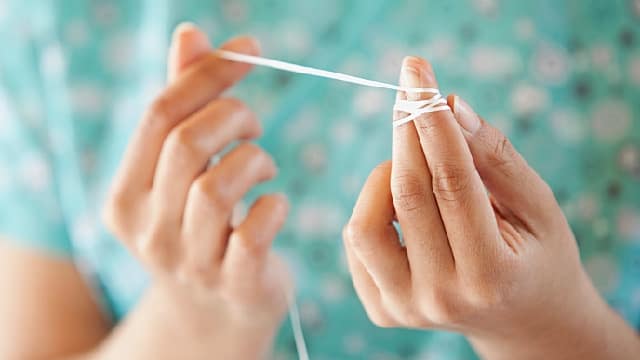Many people hate flossing. Why? Well, for some people, taking out a piece of floss, wrapping it around their index and middle fingers, placing it between two teeth, and then moving it to remove food or dental plaque can be too much of a process. There are easier options to clean between the teeth like dental flossers, toothpicks, interdental brushes and even battery-powered or electrical flossing devices.Regardless of the method, if you're someone who just doesn't like flossing or you don't fully understand it, it's crucial to remember why flossing is an important part of a healthy smile.
What Are the Facts?
Deccan Chronicle reported that the majority of available studies fail to demonstrate that flossing is generally effective in plaque removal.This is a bold statement to make to the public, dental professionals and oral care companies who make dental floss. This report claims that there is no scientific research out there that proves flossing helps prevent gum disease and cavities. However, published research in the Journal of Dental Hygiene shows that flossing and tooth brushing will help reduce gingivitis at one, three and six months, but not reduce plaque at one or three months.So what does this flossing news mean to you?
The Downfalls of Not Flossing
When you don't floss, you're at risk for two major dental issues in your mouth: Gingivitis, and cavities between your teeth. Without flossing, you are not able to remove dental plaque build-up. According to a research study published in Odontology, It has been estimated that there are over a thousand different species of bacteria in the oral cavity as potential colonisers. Dental plaque has the properties of a biofilm, similar to other biofilms found in the body and the environment. Modern molecular biological techniques have identified about 1000 different bacterial species in the dental biofilm, twice as many as can be cultured. These bacteria can irritate the gum tissue, causing it to become red and inflamed and bleed easily, which breeds more bacteria and causes gingivitis to occur.Another risk of not flossing is that cavities are more likely to form between your teeth. The same dental plaque that causes gingivitis can lead to the growth of harmful bacteria that will destroy the enamel between your teeth, consequently forming a cavity.
Oral Health and Overall Health
Gingivitis, if left untreated, can progress to periodontal disease. According to Healthy Mouth Healthy Body, poor oral hygiene regimen can eventually cause periodontal disease. Bacterium associated with periodontitis can enter the bloodstream via bleeding gums causing certain medical conditions including heart diseases. Periodontal disease has also been linked to diabetes and can contribute to the risk of low birth weight in new-born babies. An easy way to reduce your risk of other serious side effects from periodontal disease, however, is by practising optimal oral hygiene at home, which includes flossing and tooth brushing.
Conducting Great Oral Hygiene
You should floss at least once a day, the best time being right before you go to bed to remove any food and plaque from between the teeth and along the gumline. Flossing should be done with waxed floss, as it won't shred between the teeth.Use a soft-bristle toothbrush at least twice daily with an antimicrobial toothpaste to remove plaque, reduce gingivitis, prevent cavities and provide your mouth with an overall clean healthy feeling.So, when you see that container of dental floss at your bathroom sink, be motivated to start flossing and help prevent dental diseases from occurring in your mouth!






